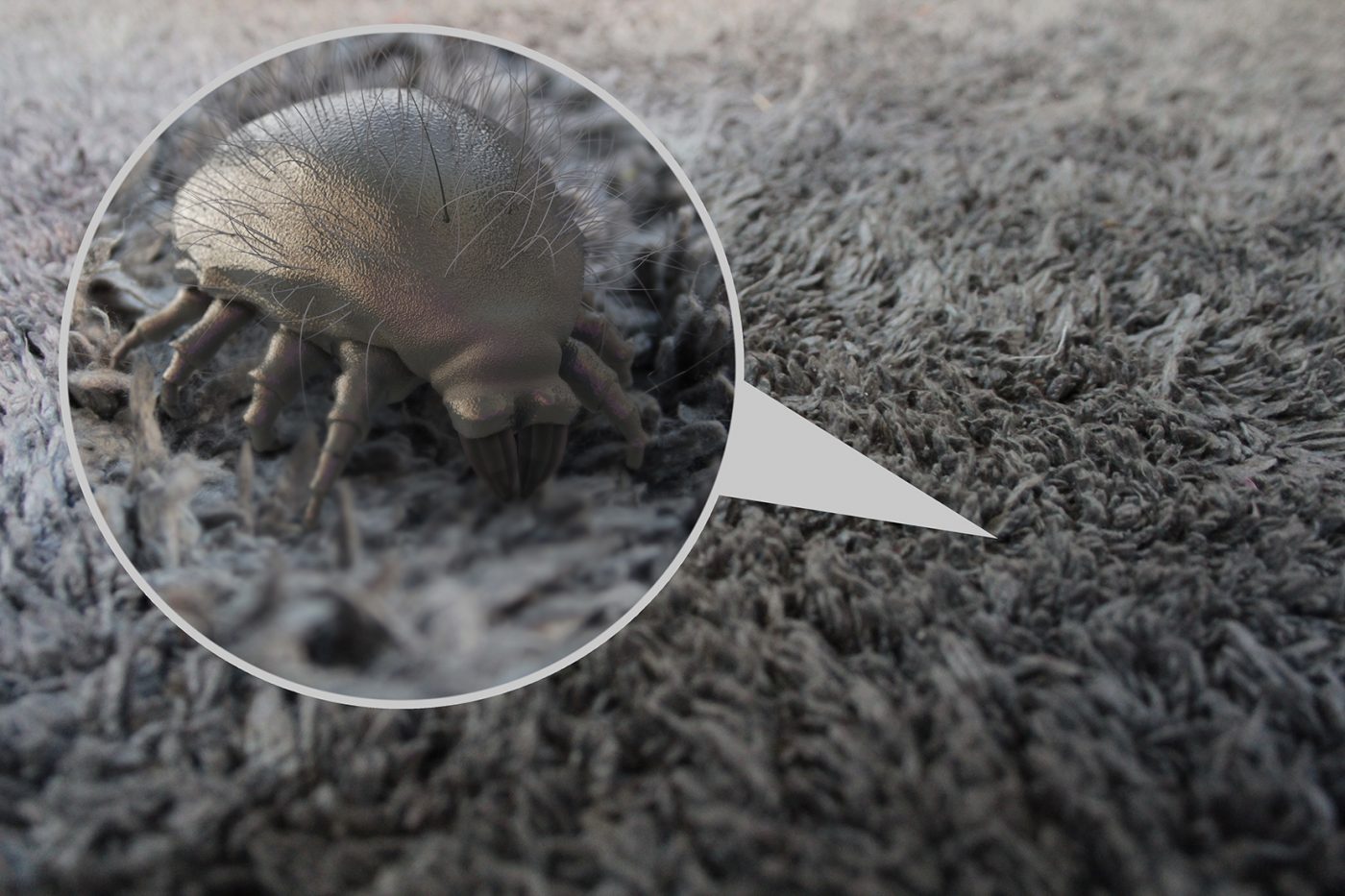If you find yourself having allergic reactions indoors, then a tiny creature you can’t even see might be the culprit. This creature is called a dust mite. Common dust mite allergy symptoms include, sneezing, runny nose, itchy, red or watery eyes, stuffy nose, itchy nose, mouth or throat, postnasal drip or cough. If your dust mite allergy triggers your asthma, you may also experience difficulty breathing, chest tightness or pain, a whistling or wheezing sound when breathing out, trouble sleeping caused by shortness of breath, coughing or wheezing.
Dust Mite Facts:
- Dust mites are among the most common trigger of year-round allergies and asthma.
- They are on every continent except Antarctica.
- It may not be possible to rid your home entirely of these creatures.
- A dust mite measures only about one-quarter to one-third of a millimeter.
- They are too small to see with your eyes alone.
- Under a microscope, they look like white bugs. They have eight legs, so they are not insects, but arthropods, like spiders.
- There are at least 13 species of mites.
- They are all well adapted to the environment inside your home.
- They feed mainly on the tiny flakes of human skin that people shed each day.
- They thrive inner layers of furniture, carpets, bedding and even stuffed toys.
- An average adult person may shed up to 1.5 grams of skin in a day. This is enough to feed one million dust mites!
- Both the body parts and the waste of dust mites are allergens for many people.
- In a warm, humid house, dust mites can survive all year.
Thankfully, there are ways you can prevent allergic reactions to these pesky creatures. There are many changes you can make in your home to reduce your dust mite allergy. The most common place for dust mites is the bedroom. So this is the best room to start with. Some things you can do are cover mattresses and pillows in zippered dust-proof covers, wash your sheets, rugs and blankets weekly in hot water, avoid wall-to-wall carpeting, curtains, blinds, upholstered furniture and down-filled covers and pillows in the bedroom (unless you can wash regularly in hot water), wear a filtering mask when dusting or vacuuming, and keep the humidity in your home less than 50 percent.
If you think you might have a dust mite allergy, come on in and we can find out for certain. We will also get you the treatment you need!
Source:
http://www.aafa.org/page/dust-mite-allergy.aspx



